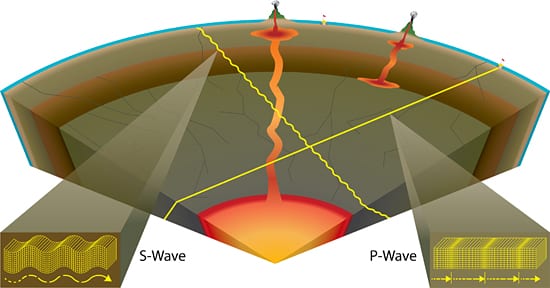Image
Making Waves
July 26, 2008When an earthquake occurs, rocks at a fault line slip or rupture, and a portion of Earth’s crust physically moves. That releases energy, and two types of seismic waves radiate outward from the earthquake through Earth’s interior and along its surface. Compression waves (p-waves) alternately compress and release rocks in the direction the waves are moving. Shear waves (s-waves) move rocks perpendicularly to the direction the waves are moving. Compression and shear waves travel through the earth at different speeds. With seismic measurements of these waves, we can locate an earthquake’s source.
(Illustration by Jayne Doucette, Woods Hole Oceanographic Institution)
Image and Visual Licensing
WHOI copyright digital assets (stills and video) contained on this website can be licensed for non-commercial use upon request and approval. Please contact WHOI Digital Assets at images@whoi.edu or (508) 289-2647.

